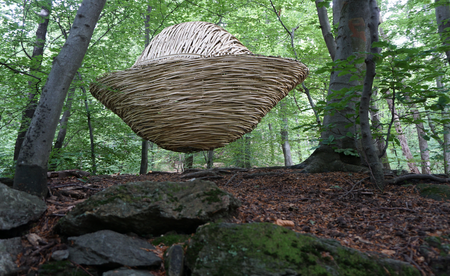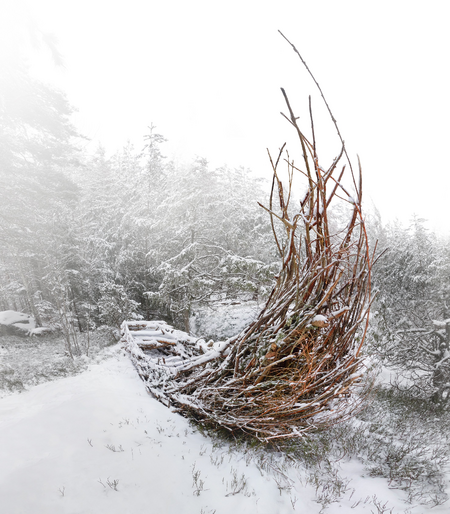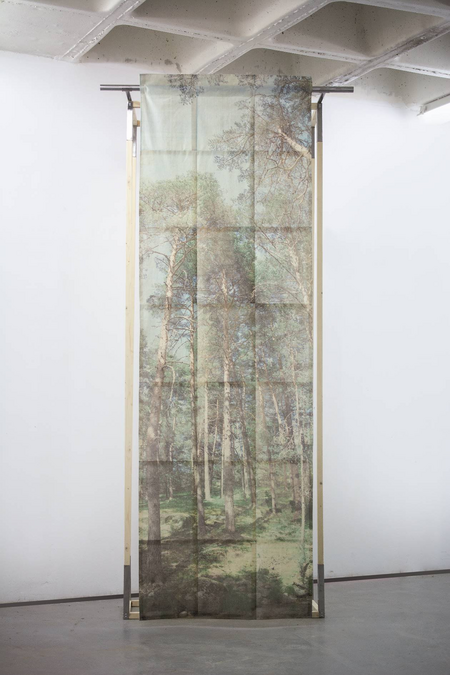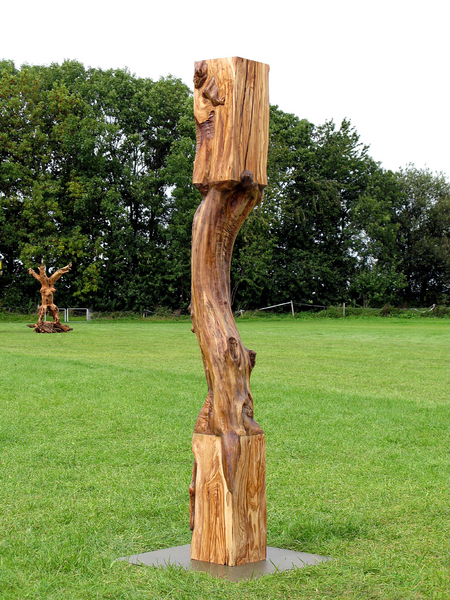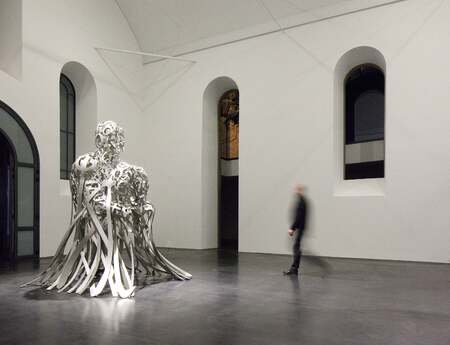Wood - a material for old and new
Wood is a material that can be used in many different ways and from which a wide range of different works can be created. Here we introduce five artists who create great works of art with this often inconspicuous material. This natural, vegetative material often requires less energy than other materials, such as stone or metal, and can be used in a wide variety of ways.
Originally, wood was not only used as fuel, dishes and storage containers, but also as building material and for ritual acts. Today, wood is still an integral part of our everyday life and is used for countless purposes. This may be due to the fact that the wood obtained from the different tree species carries and maintains the characteristics of the respective tree. For example, a distinction is made between coniferous and deciduous woods. The value of the wood is measured by its strength or hardness, so that a suitable wood can be selected for every purpose. If the characteristics of wood are very broadly defined, then exotic tree or grass species can also be mentioned here that form a solid, stable and workable trunk or stalk. These include, palm wood and some types of grasses that grow to great heights and have very good stability so that houses and other structures can be made of it, e.g. bamboo.
Another important aspect of wood is its sustainability. Wood is a regenerative, self-replenishing, raw material, which means it plays a major role as a renewable energy source.
Generally speaking, wood and the products made from it are biodegradable, (although nowadays attempts are being made to avoid this through chemical treatment). Wood can also be processed into paper or cellulose fibres, which are used in the chemical industry or for special textiles. Furthermore, wood can be used as a sound carrier in the construction of musical instruments or, as a damping material for the reduction of mechanical vibrations.
Wood as material in art
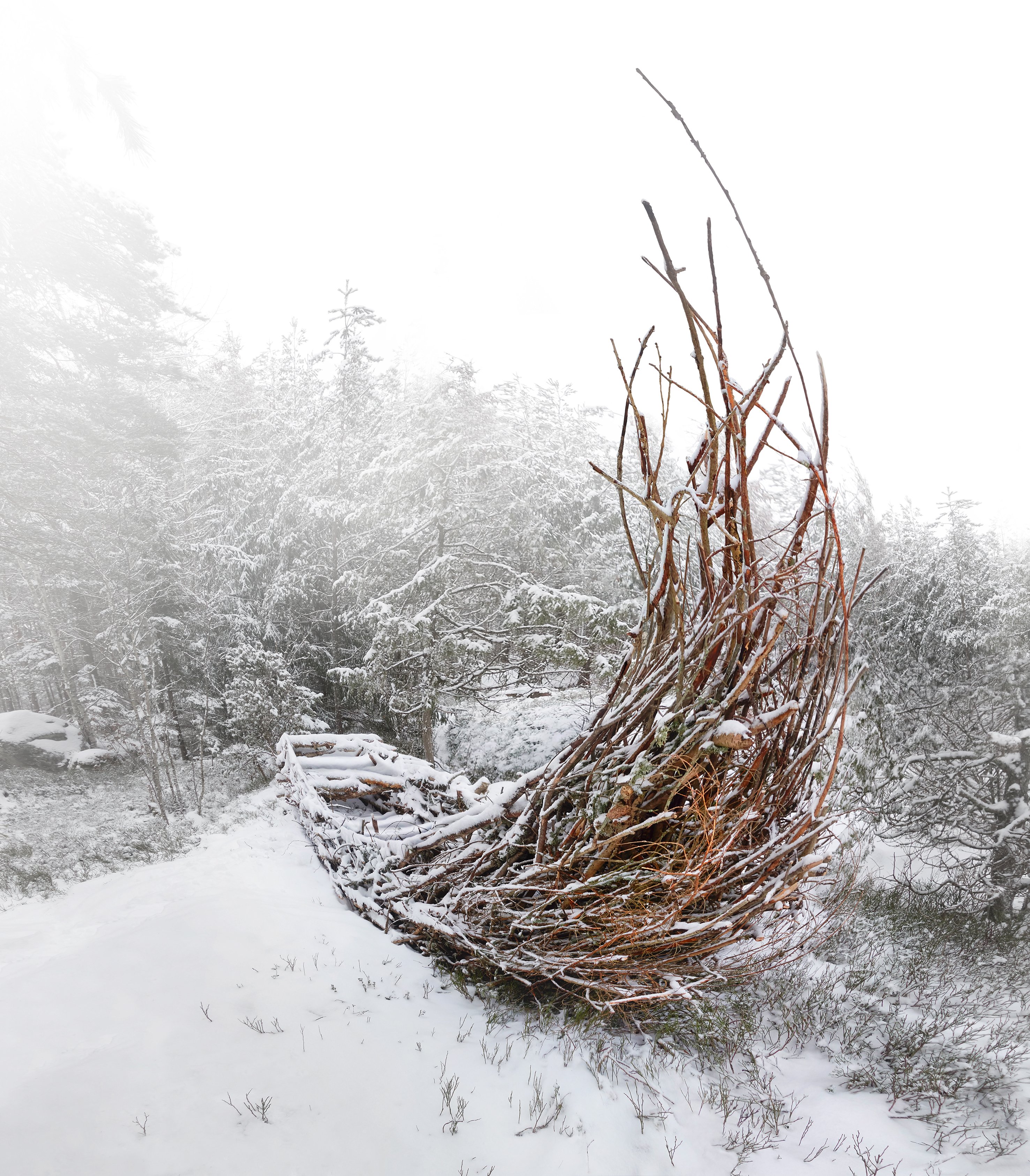
Copyright: Seregel
With his work "Wooden Ark", the artist çhakal thematizes the use and overloading of nature by man. His wooden work is built like a boat, or an ark, constructed with branches and twigs, making it appear fragile and breakable. The sculpture seems dangerously overloaded by the large erratic block which is located inside the ark and symbolizes the great mass of demands we make on nature through leisure, sport and using it as a source of food and building materials. These fragile boats stand for our world and nature and illustrate the overtaxing of them by man in an excellent way. For these works of art, the artist takes components from nature, but after a certain time these components return to the environment and are reabsorbed in it in the natural cycle, which was only briefly stopped and interrupted by the artistic work. The flow of old wood, which becomes humus again, is preserved and begins anew. With his work, the artist reflects society, which, with its consensus of ever more and ever faster, is dangerously shaking or even toppling over the basis of our survival.
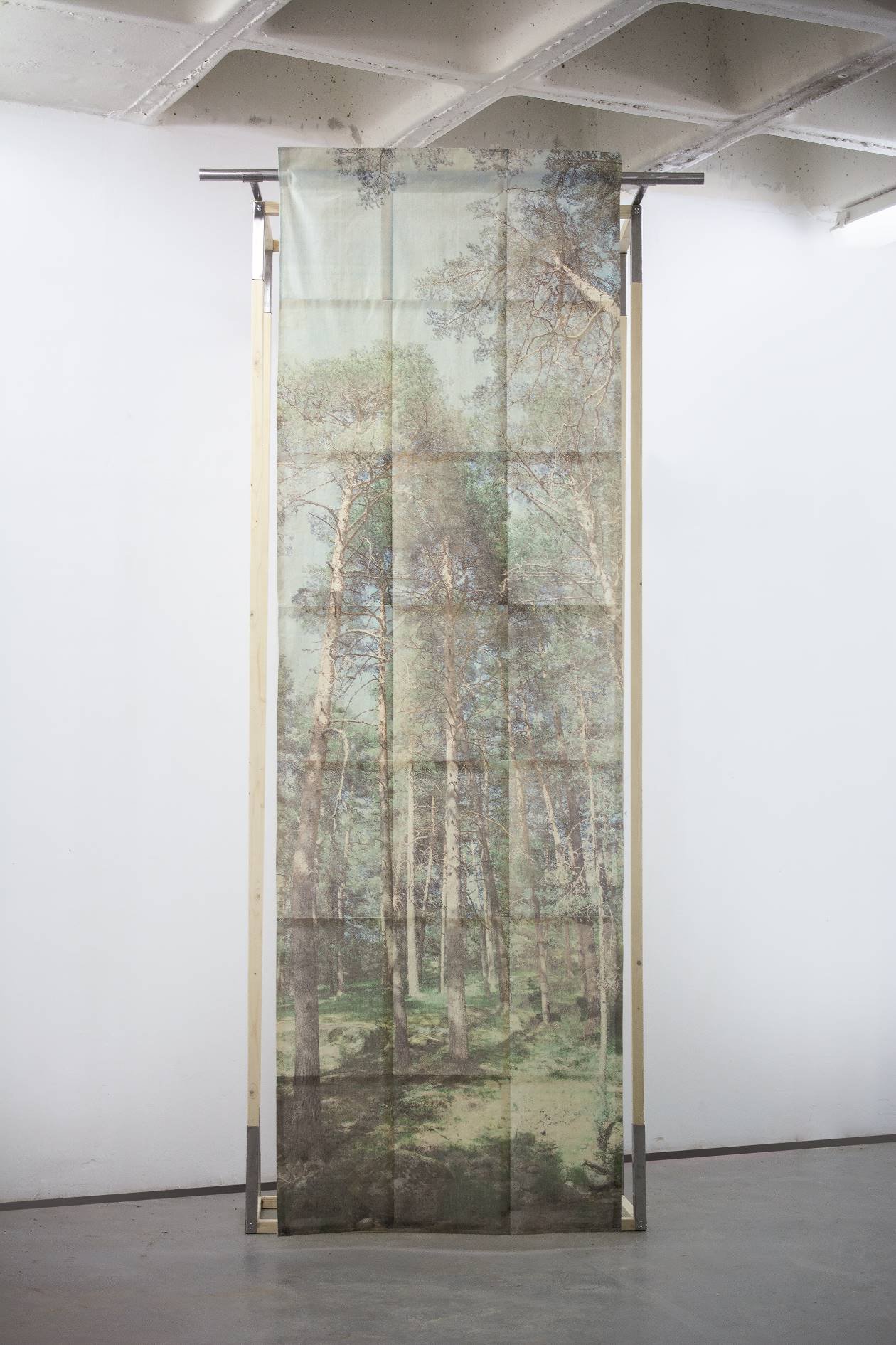
wood, iron, photography on textile
Copyright: Tamara Jacquin
The work "Once upon a time...I,II" by Tamara Jacquin consists of a wood and iron construction, on which a forest is depicted on a natural cotton canvas. This photograph of the forest is divided into individual sections, which are then sewn together. The depicted forest appears light and sun-drenched, it is a weightless image of a dream— In other words, the opposite of our highly technological and agricultural country, which also includes the forest landscape. This forest is almost non-existent in our modern times, since human intervention has turned the original state of a primeval forest into a shaped and partly standardized landscape, which is determined by human use. With her work "Once upon a time...I,II" the artist Tamara Jacquin exemplifies the dismay at the destruction of natural ecosystems and what is happening to this planet today. The work reflects a dream image and at the same time evokes a memory image that may become reality in the near future, if the destruction of the earth continues at the same rate.
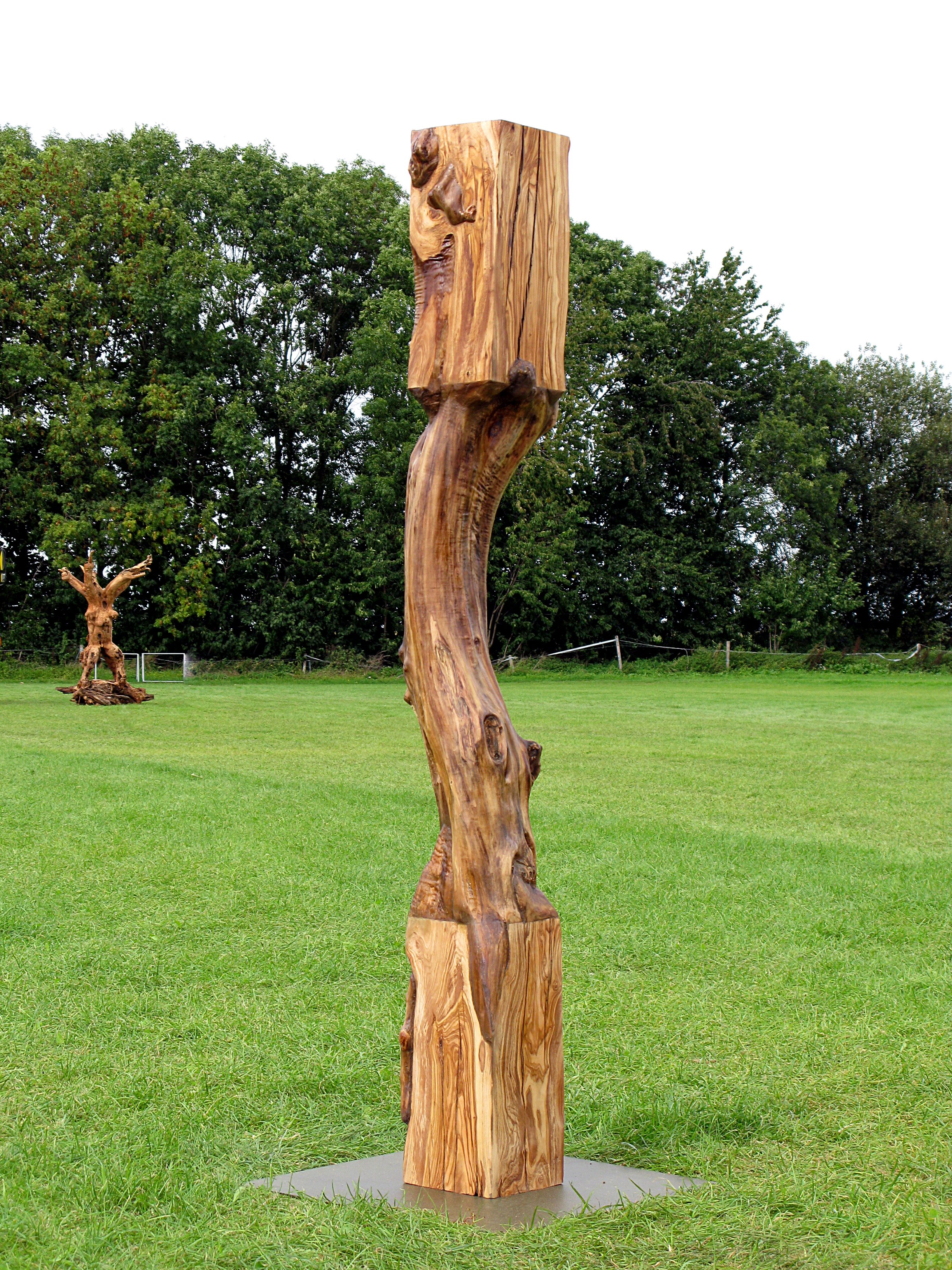
With his artwork "Two Worlds" the artist Mirek Struzik works out the contrast between pure perfection and natural appearance or growth. He worked with olive wood, which has a very rich grain and structure. This structure was left in the middle part of the stele in its natural growth form and only the heartwood was worked out and smoothed from its original form. This natural shape of the tree is transformed in the upper and lower part of the stele into a straight, perfect shape of a machine-sawn beam of olive wood. The strong difference between a natural, unaltered growth form and a machine-cut form of the other two parts in the same sculpture, makes it clear that many trees and tree species have a stronger organic growth direction, which is not always suitable for working and further use by man. "Two Worlds" reflects the difference between nature, which includes wood and other materials, and a shaped and standardized world. Man, in turn, often tries to bring nature into a standardized, perfect form. The striving for perfection and uniformity is expressed in an exemplary manner by the stele rising upwards and therefore also stands for a society that increasingly excludes the originally different, or the natural and strives for standardisation.
The artwork "Heart of Gold" by Karin van der Molen represents a boat carrying a treasure through the sky. The bamboo boat plays with the Chinese symbol for wealth, the gold nugget, which also stands for prosperity. With this work, however, the artist thematizes a different, immaterial wealth. For her, the prosperity of a society can also be measured differently, not just in terms of money or luxurious things. The wealth that is symbolically represented here refers to the presence of clean air, the variety of available colours and healthy forest soil, as well as the multitude of different trees and plants, wild animals and a myriad of insects. The artist Karin van der Molen addresses here the treasure of the network of life in which everything is connected. The protection of an intact network and great biodiversity for individual species is not only important for their survival, but also for us humans. When the viewer slips into the sculpture and is shielded by it, he experiences a further enrichment of the senses through the silence surrounding him. Symbolically, this sculpture re-connects man with his environment, points out the importance of an intact nature and allows the viewer to experience it.
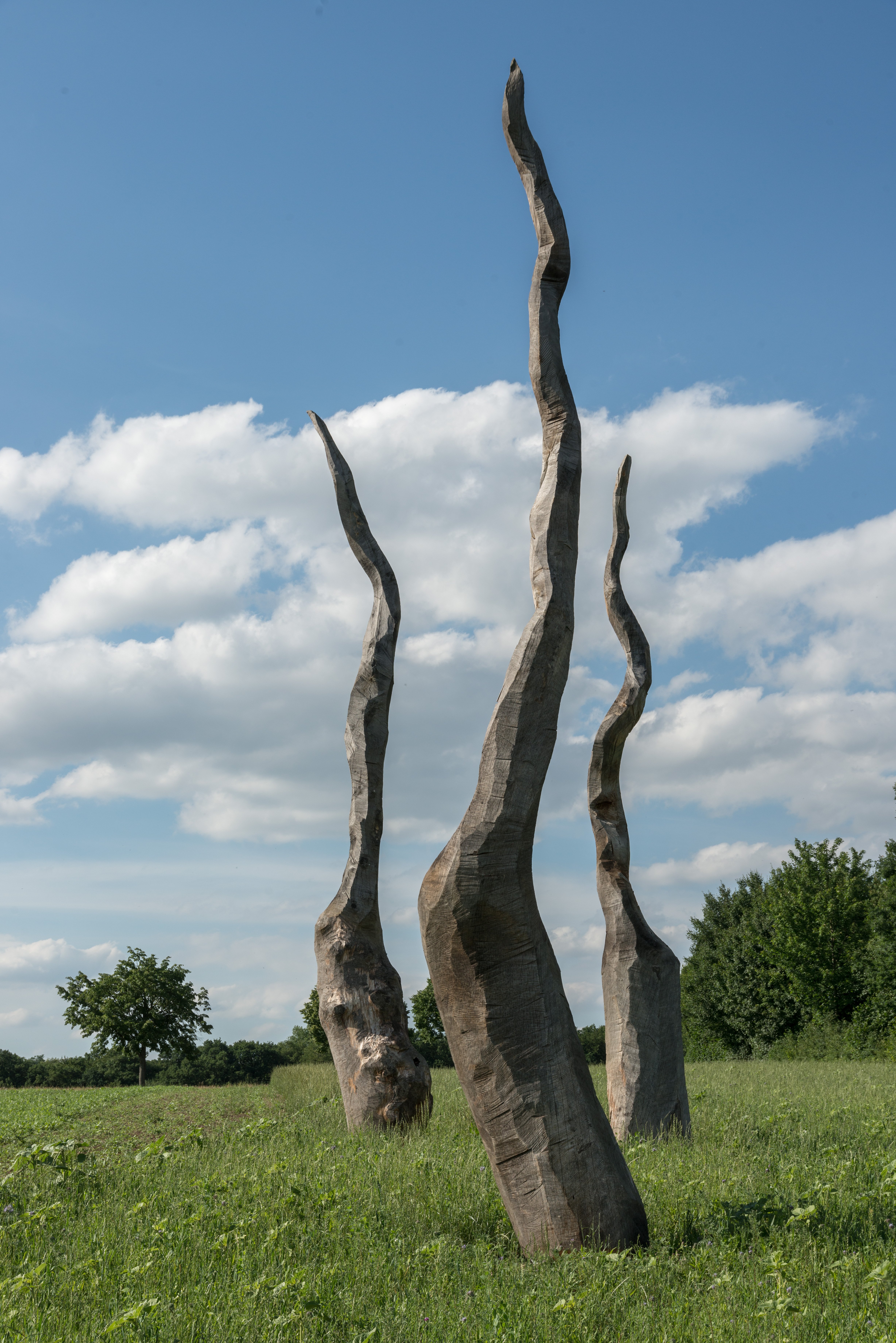
per seedling approx. 1000 x 150 x 150 cm
Copyright: Jürgen Brinkmann
The artist duo Frank Nordiek and Wolfgang Buntrock have focused on the process of illustrating natural processes and a passage of time in their work "Eichenkeimlinge" (oak seedlings). The work consists of seven individual sculptures made of oak wood, arranged in a loose group in a park landscape, which appears to have grown. Each of these individual objects was created from the core piece of a decrepit and fallen oak tree. The two artists rejuvenated their work process and created larger-than-life forms that are modelled on the germ buds of oak trees. The individual growth of the trees is taken into account and the stable core is peeled out. In addition, a young oak tree is planted next to each sculpture, which was grown from the last seeds of the fallen trees. The cycle of dying and regrowth is illustrated and the passing of time is thematized. The seedling sculptures act as placeholders while the newly planted oaks grow into ever larger trees. During this time the sculptures continue to weather and decay. With their work "Oak Seedlings", the artist duo Nordiek and Buntrock have created a group of sculptures that continues to change with the passage of time and will never be completely "finished". Reflection on nature and its human shaping is an essential part of their work, just as the theme of change and further development is inscribed in the work.
1 Wagner, Monika: Lexicon of artistic material. Materials of modern art from waste to tin. Publisher H. C. Beck Munich. Munich, Germany. 2002. S. 145 - 152.
2 Ibid.
3 ibid.
4 Ibid.
5 Ibid.

